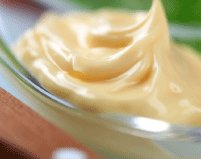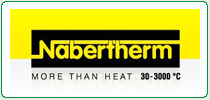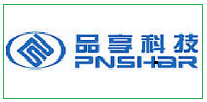USE
Mayonnaise is used as a dressing, typically mixed with other foods in making salads and sandwiches, for example.
METHOD 1
TEST EQUIPMENT
- Spring Torque Range: RV
- Spindle: T-D
- Accessory: Helipath Stand
- Speed, rpm: 10
TEST METHOD
The test is run at room temperature.
The original test was established in the 1960’s by the Mayonnaise and Salad Dressing Institute in the USA and specified the Brookfield RVT Dial Reading Viscometer. However, automated data acquisition may be performed with the Brookfield RVDV-II+ Pro Viscometer and Rheocalc software, for example. Typical automated-test data, comparing two different products, the Regular “A” and Low-fat “L”, are shown below:
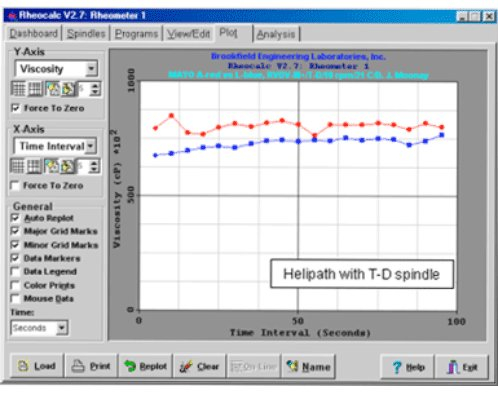
Figure 1
Mayonnaise Regular “A” data are in red, while Low-fat “L” data are in blue. The materials appear to be similar, with Regular “A” being somewhat more viscous or “thicker” in feel than Low-fat “L”.
METHOD 2
TEST EQUIPMENT
- Spring Torque Range: HB
- Spindle: V-73, immersed to the primary mark
- Accessory: (none)
- Speed, rpm: 1
TEST METHOD
The test is run at room temperature. Vane rheometry is relatively new, in QC applications. This test may be considered somewhat more sophisticated than the standard Helipath procedure described in the other Application Sheet. Automated data acquisition may be performed with the any DVIII / DV3 series Rheometer or DVII+ / DV2T Viscometer, for example, with Rheocalc(T) software. Typical data from a comparison of two different products, Regular “A” and Low-fat “L” are shown below.
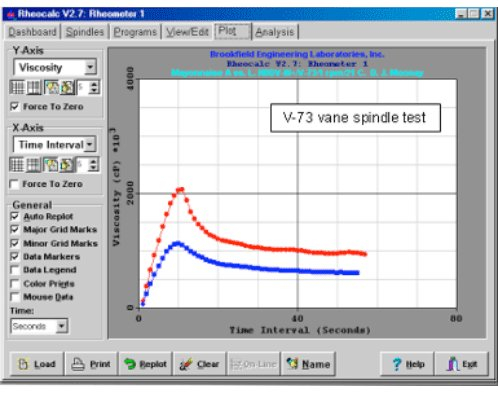
The difference between the two materials is significant. Mayonnaise Regular “A”, whose response is given by the red curve, has a much higher peak viscosity value than does Low-fat “L”, whose response is given by the blue curve. This higher peak corresponds to a higher yield stress. The initial slope of the Viscosity-versus-Time curve is greater for mayonnaise Regular “A” than for mayonnaise Low-fat “L”. The final viscosity value of Regular “A” is higher than that of Low-fat “L”. These data reflect Regular “A’s” significantly firmer texture.
METHOD 3
ISSUE
Traditionally testing with a viscometer and accessory for some mayonnaises may produce variations in the viscosity centipoise (cP) values due to the spindle as it travels through the fluid. The RST-SST with a quick 30-second yield test describes the fluid using yield stress value and modulus (slope of line leading up to yield stress).
TEST METHOD
Controlled by Shear Rate (CSR)
The test is run at room temperature.
PROGRAM
- One step,
- Start RPM = 0.5
- End RPM = 0.5
- Time = 30 seconds
- Plot = Shear Stress on Y1, Time on X, no Y2, Calculate Modulus
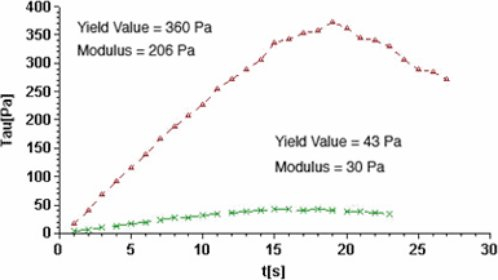
The graph shows two different mayonnaises: a traditional type with a yield value of 360 Pa and a soft, low-fat formulation with a yield value of 30 Pa. The vane spindle geometry easily accommodates mayonnaise of varying consistency and produces a repeatable curve that allows for a quick pass/fail test.
>>Download a pdf of this application note
Contact us : This email address is being protected from spambots. You need JavaScript enabled to view it.



